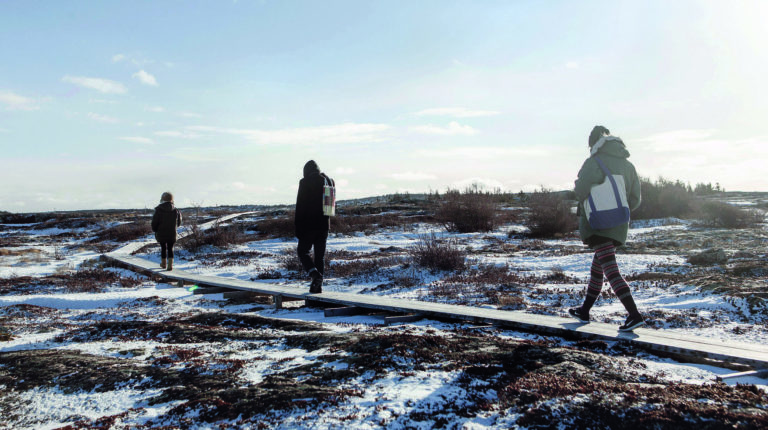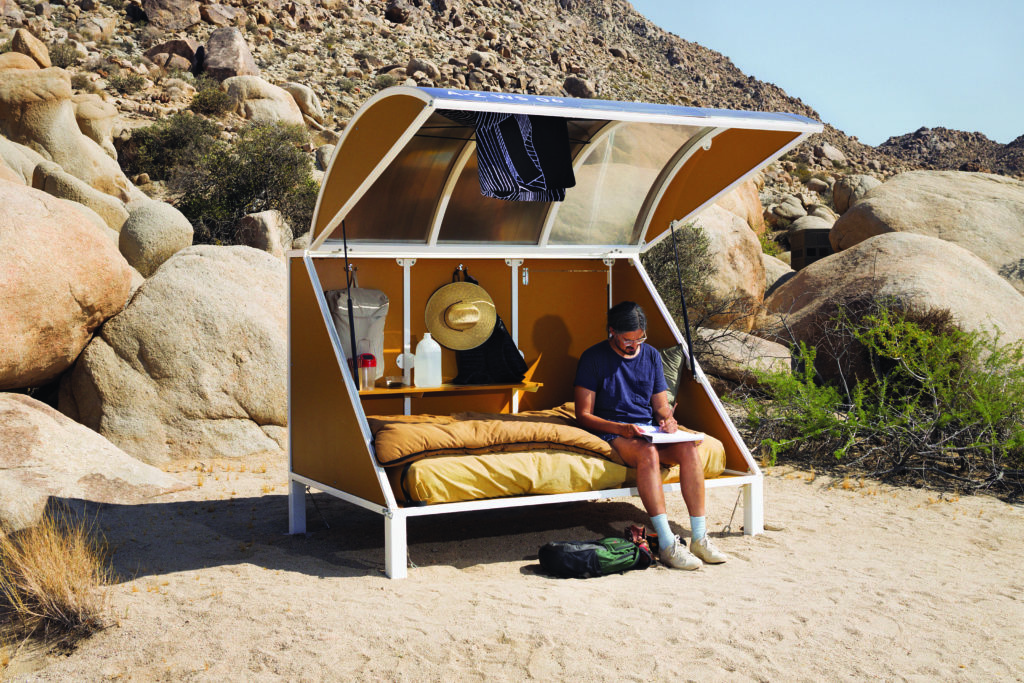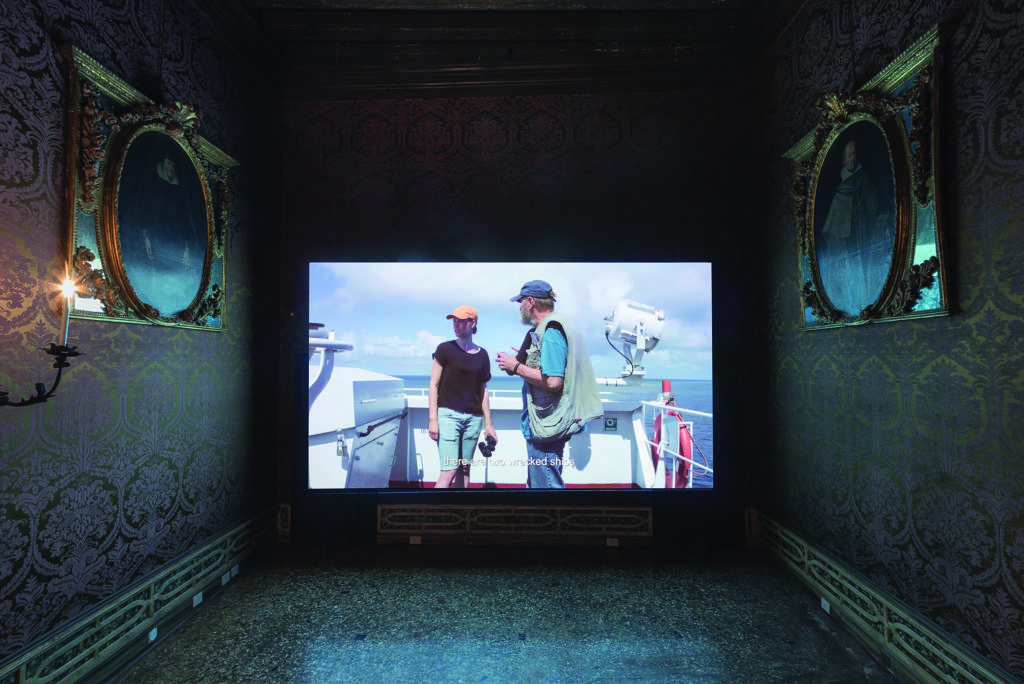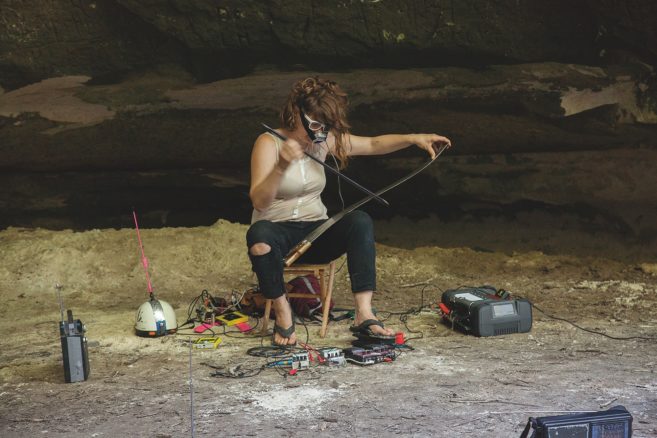In September 2016, artist Rebecca Moss arrived in British Columbia to participate in Access Gallery’s Twenty-Three Days at Sea residency. Unlike most artists’ residencies, this one differed in that it travelled with you—on the Hanjin Geneva, a shipping vessel that launched in Vancouver before deliberating across the ocean to Shanghai. “Vancouver is so expensive,” declared one CBC headline, “these artists are living at sea.”
Introduced in 2014 in partnership with the Burrard Arts Foundation and intended as a one-year experiment, Twenty-Three Days at Sea received close to 900 international applications from people wanting to spend three weeks in freight; their quarters, a cabin, landscape limited to sky, sea and deck. There’s novelty in role-playing as a stowaway, but novelty wears off fast. In the scope of things, what is a residency like Twenty-Three Days at Sea worth?
In 2017, artists’ residencies have come to feel imperative to realizing oneself as an artist, teasing the idea that you must step away from the world in order to create within it. Many offer an illusion of returning to a simpler, village-oriented culture, in forests or sea-adjacent, with an air of summer camp and all the sex that implies. They are aspirational, the promise of a residency running parallel to more tangible wellness products and experiences (though many artists might dispute this, considering the amount of work a typical residency entails). Instead of getting fitter, wealthier or better adjusted, you are invited to participate in a form of temporary play, where art is your only job. At a residency, not only do you get to be named an artist—with whatever professional advantage that cues—you get to feel like one too.
In Canada, residencies run by institutions like the Banff Centre in Alberta, Fogo Island Arts in Newfoundland and Artscape in Ontario operate as charities, businesses or a combination of both. Despite public funding options like the Canada Council for the Arts grant for international residencies, funding for Canadian residencies is modest and not always guaranteed. What the likes of the Banff Centre and smaller venues like Dawson City’s Klondike Institute of Art and Culture supply is the time and space to work, on which there is a premium. But as with anything desirable, there comes the near-subconscious implication that an artist wants this, needs this and should compete with other artists to get it. Notable alumni pique that appetite even more. The life of the artist without a residency is not enough, which is not so different from the message of the medi spa, the luxury gym or the $38 jar of Spirit Dust.
Hitching a free ride to China along with a shipment of frozen fries seems like a pretty good deal after all—and you can put it on your CV.
 Elise Rasmussen, A Poetic Truth in a Pathetic Fallacy
(still), 2017. Two-channel HD video, 16 min.
Elise Rasmussen, A Poetic Truth in a Pathetic Fallacy
(still), 2017. Two-channel HD video, 16 min.
 Fogo Island Arts
residents (from left)
Danai Anesiadou and Kate Newby, with Andrew Lichtenstein, on the boardwalk to Tower Studio, Shoal Bay, March 2013. Photo: Steffen Jagenburg.
Fogo Island Arts
residents (from left)
Danai Anesiadou and Kate Newby, with Andrew Lichtenstein, on the boardwalk to Tower Studio, Shoal Bay, March 2013. Photo: Steffen Jagenburg.
In 2017, artists’ residencies have come to feel imperative
to realizing oneself as an artist, teasing the idea that you must step
away from the world in order to create within it.
More than a century ago in the French village of Giverny, Claude Monet planted and tended to a botanically lawless garden, growing by hand the world he wished to paint. Hundreds of water lily canvases were the result of importing Egyptian and South American plants to his yard, sculpting the native ecology to reflect other, distant ones. Monet spent years of full days watching the sun rise and set on those plants. The paintings, a gradient record of the hours spent in one place.
As if any artist could live like this now. To paraphrase Cher Horowitz— Monet’s lifestyle looks good from far away, but up close it’s a big old mess of inaccessible privilege. For Elise Rasmussen, a Canadian artist based in New York, residencies deliver the varied environments her projects require. Working in research-based photography, video and performance, Rasmussen is an alumna of some 13 residencies, many of which provided her with investigative context and access to gated places, like South Africa’s Nirox Foundation, where she worked on a project that dealt with rhino poaching. “Having that affiliation helped in getting access to the necessary people and places for my [resulting] video,” she says.
Beyond furnishing access, residencies have proven to be an asset in pushing Rasmussen’s career forward. “They provide an instant community, and through this, some amazing networks, collaborations and friendships have been forged,” she says. “Many offer studio visits with curators, which are helpful in gaining visibility. Certain residencies hold prestige, which does help pad the CV.”
These benefits outweigh the disadvantages of frequently living in transit, as Rasmussen has found. “I’ve prioritized residencies in favour of other work, like teaching positions, and forfeited a reliable income,” she tells me. “Beyond that, it’s sometimes difficult to navigate relationships.” But the residency-borne connections are satisfying to Rasmussen, and have resulted in an expanded international community. It’s not Monet’s Giverny, but it is a garden.
Being a serial residency participant creates a way of living—one that prioritizes work and sacrifices the comforts of a fixed life. It doesn’t exactly fit with the capitalist aspiration of stable ownership. Still, it’s about work; the residency as a means of steady production. “I am not on a vacation,” says Rasmussen. “A few residencies I’ve been on offer services that make the stay feel a little like a holiday. The Banff Centre has some great amenities, like having your bed made every day. A pool and hot tub. But all residencies are about work.”
To Nicolaus Schafhausen, the strategic director of Newfoundland’s Fogo Island Arts, time is a necessary provision for the quality of thinking an artist requires. The Fogo residency yields a unique, often lengthy duration (up to three months), with accommodations, studio space, a stipend, travel expense coverage and even a cell phone if required. It is also the most beautiful—the bracing, Caspar David Friedrich–esque setting; the Inn, which is striking enough itself to be featured in design magazines; the handmade furniture. Schafhausen notes that their last call received upwards of 1,000 international applications, and based on past precedent, the number will only be greater this year. “We are not interested in a wellness program,” he says. It comes down to “whether [the residents] can intellectually explain what they do and why they are doing it. What is their added value to all of us? What is the role of art, and what is the role of the artist today?” Relieved of their usual networks, artists, he suggests, find something rare at Fogo. “The so-called art community is a bubble in itself. [At Fogo], artists have time to engage, and the time to think differently.” Space, time and local relationships. “It has something to do with the mentality of the island. That’s what stays,” he says.
Residencies authorize an artist to feel time differently, turning regular life on land into radiant cuttings. They are brief periods of industry, even if the only thing produced is an idea or a friendship.
Fogo Island Arts is a branch of the Shorefast Foundation, where Schafhausen is also the strategic advisor. Schafhausen describes his role as “engaging artists in dialogue on the role of contemporary art in creating alternative solutions for the revitalization of rural communities prone to emigration.” He isn’t just curating the artists; he is curating reciprocal, short-term interactions between visitors and island locals, with benefits going in both directions. The residency is just a fraction of Fogo and Shorefast’s reach (which includes a cod business, the thriving Fogo Island Fish). By Schafhausen’s account, the residency is a kind of relationship generator, fuelling international partnerships, artistic diplomacy and shows that stretch beyond Fogo Island’s rocky shores. It makes work—not just for the artists who attend, but for the Fogo Island community, many of whom are employed by Shorefast’s associated businesses. It might not be hot stone massages and racquetball, but Fogo helps create a context of sustained wellness which courses through the island’s economy and culture. When artists leave, they carry that with them too.
This mutualism is practiced by other residencies as well, built on the principle that by engaging with the community or institution, the participant will be able to feel more invested, which conceivably makes its way into the work. This is sometimes referred to as “the exchange.” It can be as straightforward as tuition, travel and housing costs, or subsidizing these things by donating a work. At artist Andrea Zittel’s A-Z West Wagon Station Encampment in Joshua Tree, where photographer Sarah Bodri has done residencies the past two springs, exchange means participating in an hour of communal labour every morning with the other residents. “You’re maintaining the space for yourself,” she says, referring to the silver, bread box–shaped pods that comprise the individual living quarters, “but you’re also maintaining the space that [Zittel] has created.”
To Zittel, a social- and environment-focused artist, A-Z West is a living art experiment, founded in 2000 on over 50 acres of desert land. On Zittel’s website, A-Z West is described as “a testing grounds for living, in which spaces, objects and acts of living all intertwine as a single ongoing investigation into what it means to exist and participate in our culture today.” What Bodri valued most about her time there was the opportunity to “connect to a new landscape, psychologically and environmentally.” Referring to the balance of her year spent in a city, Bodri describes the sense that “we operate in spite of it—the pace and lifestyle that a city entails. The city is destined for productivity. In the desert, you think ‘maybe productivity is not my ultimate goal.’ I’m not going there to produce. I’m going there because I want to live.”
“For us, residencies have been about work. We just work until it’s time to go home, or someone gets sick,” says Jon McCurley, who with Amy Lam collaborates in a variety of forms under the name Life of a Craphead. Residencies (like one completed at Sackville’s Struts and Faucet) give them access to each other’s ideas without having to work around schedules. Their recent collaboration on a series of poster-sized comics depicts scenes of casual racism—events they had witnessed in educational and art institutions. “A person of colour is likely to experience some form of racism or another in any kind of situation where they have to live with a bunch of white people they don’t know,” Lam explains via email. The comics are not an indictment of where they occurred, but a reminder that they did.
Certain institutions provide specific and mindfully designed residencies, like the Winnipegorganization Mentoring Artists for Women’s Art, and the Banff Centre’s Visual and Digital Arts Indigenous Residency. Still, these are relatively few, and it can be difficult to balance intermittent paid jobs with the opportunities to go to any kind of residency, let alone one that recognizes the need for diverse and inclusive programs. No matter how much financial and institutional assistance is provided, “access to many residencies can be restricted by class,” explains Lam.
 Andrea Zittel, A-Z Wagon Stations: Second Generation, 2012–. Powder-coated
steel, aluminum, plexiglass, wood, canvas, futon, pillow,
hand brush, straw hat,
2.08 x 5.86 x 1.44 m each. Courtesy Regen Projects, Los Angeles.
Photo: Lance Brewer.
Andrea Zittel, A-Z Wagon Stations: Second Generation, 2012–. Powder-coated
steel, aluminum, plexiglass, wood, canvas, futon, pillow,
hand brush, straw hat,
2.08 x 5.86 x 1.44 m each. Courtesy Regen Projects, Los Angeles.
Photo: Lance Brewer.
About a week into Rebecca Moss’s passage, the Hanjin Shipping Company declared bankruptcy. When the ship neared Shanghai, it wouldn’t be allowed to dock. Publications like the Guardian reported on the artist (and 24 other passengers) “bobbing aimlessly” in international waters. After 26 days, the Hanjin Geneva disembarked in Japan, and Moss found her way home. The result was a 20-minute video work entitled International Waters synthesizing the experiences of those aboard the Hanjin Geneva with the various news reports that were being released simultaneously. As Moss told the Vancouver Sun, “Before the news, there was always a feeling that we were moving in a line toward a horizon, and there was a real sense of purpose…I had knowledge that I had a certain number of days left and I was trying to plan to execute my ideas accordingly.” That changed abruptly.
One of the psychological gains of a residency is knowing exactly when it will end. The experience, the work and the relationships are marked by an urgency that can be difficult to muster in everyday life. With no end in sight, Moss corresponded with merchants concerned about the state of their businesses. As one of them pointed out, “you’re getting a unique view on globalization.” Moss’s experience transcended the conventions of a typical residency, in that she didn’t know how it would end. “[It] frames and contextualizes the residency in a very dramatic set of circumstances,” she said. “I also have a compulsion to document everything with these new eyes—even a calendar swinging on the wall because of the motion of the boat becomes suddenly significant and interesting.”
Residencies authorize an artist to feel time differently, turning regular life on land into radiant cuttings. They are brief periods of industry, even if the only thing produced is an idea or a friendship. Perhaps in the way that climbing into your own bed after spending a few weeks away from it feels like a gift, leaving a residency is also integral to the outcome—the gift of returning to something seemingly endless: one’s extant life.

 Rebecca Moss, International Waters, 2017. 20 min. Installation view at Palazzo Contarini Polignac, Venice. Courtesy Pinchuk Art Centre, Kiev. Photo: Sergey Illin.
Rebecca Moss, International Waters, 2017. 20 min. Installation view at Palazzo Contarini Polignac, Venice. Courtesy Pinchuk Art Centre, Kiev. Photo: Sergey Illin.







